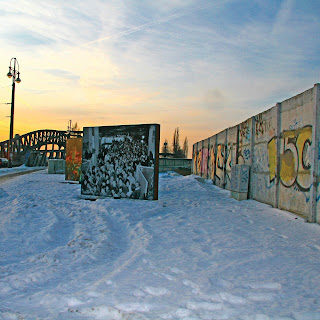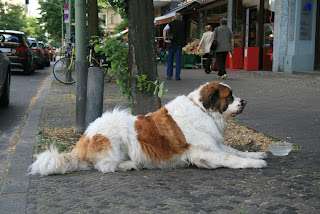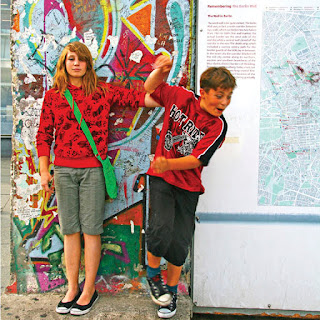This day today in 1935, Kurt Tucholsky killed himself in Swedish exile. The famed writer, journalist, poet, and satirist, an early warner of the Nazis, took an overdose of sleeping pills in December 212, 1935.
He was convinced the Nazis would rule Germany for some time to come;
they had cut off his income by burning and outlawing his books; the Swedish government did not him a permanent visa, and he was also chronically ill. This is the last letter he wrote to his estranged (ex)-wife; Mary Tucholsky (whom he called Mala or Meli),
documented by his biographer Harold L. Poor in Kurt Tucholsky. The Short Fat Berliner Who Tried to Stop A Catastrophe With A Typewriter. Tucholsky called himself Nungo in his letters to Mary. The letter was translated by Harry Zohn and re-translated for the new edition of this book by Kemery Dunn. I will add a picture of
Tucholsky as a child.
Want to take His hand for the last time and ask Him for forgiveness for what has once done to Him. Had a lump of gold and fished for pennies; did not understand and did stupid things—did not betray, but deceived and did not understand.
I know that He is not vengeful. What He has endured on the return trip to Berlin; what took place later: I have richly atoned for it. In the end, it was clear to me—as clear as the reflection in a polished mirror. Now, everything comes back, images, words… and how I let Him go—now that it’s all is over, I know: I bear the whole, complete guilt.
… And now it is almost seven years to the day since gone away, no—since let go away. And now the memories are splashing down, all of them together. I know what I complain to Him and about Him—our unlived life.
If the times were normal (and if I were also), we would have a child of, say, twelve years—and what’s more, we would have the unity of our memories.
Did not dare to call Him anymore. Hopes that He has followed my plea on the envelope—the alternative would not be good. I may assume that when He reads this, I’m not disrupting a happiness I myself was not able to earn.
No, not dared to call Him anymore. For reasons easy to understand, I have never made any kind of “inquiries”: If He were married, I would have heard—but not anything else. And above all did not dare because had no right to tear Him a second time from work and everything—: am sick and can defend me no longer—much less someone else. I lack nothing important or grave—it is a series of small disturbances that make it impossible for me to work. I could not call Him into sure misery—quite aside from the fact that I never hoped He would come.
Still. Knew.
If He had come, He would not have found another person, but a transformed, matured one. I never published a line about what happens in Germany now—in spite of all requests to do so. It is no longer my concern. It is not cowardice—what’s the big deal to write for the exile press!
But I’m au dessus de la mêlée, it is no longer my concern. I’m done with it.
And now so much has been freed, now—now I know—but now it’s of no use. Was stupid in the beginning—the usual coup de foudre for 2.50 francs, half important things and I had good friendships. But I still see myself after His departure, sitting in Parc Monceau where I began my Paris. I was “free”—and I was sad and empty and not at all happy. And that’s how it remained.
His loving patience to participate in this madness—the unrest, the patience to live next to a man who was as if always hunted; who always had fear—no, anxiety. The anxiety that has no basis and could not name one reason—today, it would no longer be necessary. Today, I know. If love is what turns you upside down, which maddens every fiber of your being—then such can be felt anytime and anywhere. But when it comes to real love, which lasts, which returns over and over again:—then I loved only once in my life.
Him.
… Had imagined a ridiculous “freedom” on the other side—whereas such a thing truly does not exist. Lived more and more quietly—and now washed up on the shore—the vehicle is stuck—can’t keep going.
I only want to ask Him for forgiveness.
I was once a writer and I learned from S.J. the joy of quotation. If He wants to know how it sounds in the classics, He should read the parting letter by Heinrich von Kleist to his sister in Wannsee, 1811. And perhaps also look through a few pages of Peer Gynt; I don’t know if we saw the play together, it is not really performable. Toward the end, the hero rushes around the forest and happens upon a hut in which this chocolate image, Solveig, sits and sings something syrupy. But then the lines: “He arose—deadly pale.” Then he speaks four more lines. These are the ones I mean.
“Oh, Angst,” ... not because of the end. I don’t care about that, like everything which happens around me and to which I no longer have a connection. The reason to struggle, the bridge, the inner force, the raison d’ etre is gone. I did not understand.
Wish Him everything—everything good—
and please forgive.
Nungo
Want to take His hand for the last time and ask Him for forgiveness for what has once done to Him. Had a lump of gold and fished for pennies; did not understand and did stupid things—did not betray, but deceived and did not understand.
I know that He is not vengeful. What He has endured on the return trip to Berlin; what took place later: I have richly atoned for it. In the end, it was clear to me—as clear as the reflection in a polished mirror. Now, everything comes back, images, words… and how I let Him go—now that it’s all is over, I know: I bear the whole, complete guilt.
… And now it is almost seven years to the day since gone away, no—since let go away. And now the memories are splashing down, all of them together. I know what I complain to Him and about Him—our unlived life.
If the times were normal (and if I were also), we would have a child of, say, twelve years—and what’s more, we would have the unity of our memories.
Did not dare to call Him anymore. Hopes that He has followed my plea on the envelope—the alternative would not be good. I may assume that when He reads this, I’m not disrupting a happiness I myself was not able to earn.
No, not dared to call Him anymore. For reasons easy to understand, I have never made any kind of “inquiries”: If He were married, I would have heard—but not anything else. And above all did not dare because had no right to tear Him a second time from work and everything—: am sick and can defend me no longer—much less someone else. I lack nothing important or grave—it is a series of small disturbances that make it impossible for me to work. I could not call Him into sure misery—quite aside from the fact that I never hoped He would come.
Still. Knew.
If He had come, He would not have found another person, but a transformed, matured one. I never published a line about what happens in Germany now—in spite of all requests to do so. It is no longer my concern. It is not cowardice—what’s the big deal to write for the exile press!
But I’m au dessus de la mêlée, it is no longer my concern. I’m done with it.
And now so much has been freed, now—now I know—but now it’s of no use. Was stupid in the beginning—the usual coup de foudre for 2.50 francs, half important things and I had good friendships. But I still see myself after His departure, sitting in Parc Monceau where I began my Paris. I was “free”—and I was sad and empty and not at all happy. And that’s how it remained.
His loving patience to participate in this madness—the unrest, the patience to live next to a man who was as if always hunted; who always had fear—no, anxiety. The anxiety that has no basis and could not name one reason—today, it would no longer be necessary. Today, I know. If love is what turns you upside down, which maddens every fiber of your being—then such can be felt anytime and anywhere. But when it comes to real love, which lasts, which returns over and over again:—then I loved only once in my life.
Him.
… Had imagined a ridiculous “freedom” on the other side—whereas such a thing truly does not exist. Lived more and more quietly—and now washed up on the shore—the vehicle is stuck—can’t keep going.
I only want to ask Him for forgiveness.
I was once a writer and I learned from S.J. the joy of quotation. If He wants to know how it sounds in the classics, He should read the parting letter by Heinrich von Kleist to his sister in Wannsee, 1811. And perhaps also look through a few pages of Peer Gynt; I don’t know if we saw the play together, it is not really performable. Toward the end, the hero rushes around the forest and happens upon a hut in which this chocolate image, Solveig, sits and sings something syrupy. But then the lines: “He arose—deadly pale.” Then he speaks four more lines. These are the ones I mean.
“Oh, Angst,” ... not because of the end. I don’t care about that, like everything which happens around me and to which I no longer have a connection. The reason to struggle, the bridge, the inner force, the raison d’ etre is gone. I did not understand.
Wish Him everything—everything good—
and please forgive.
Nungo




















